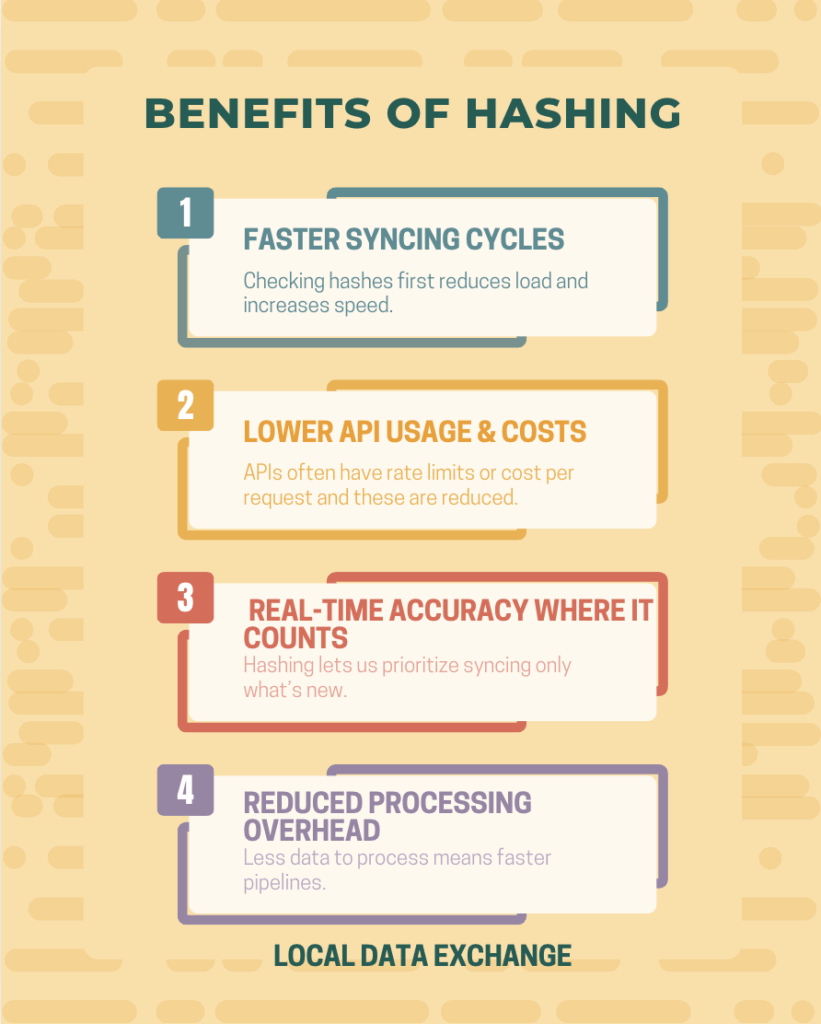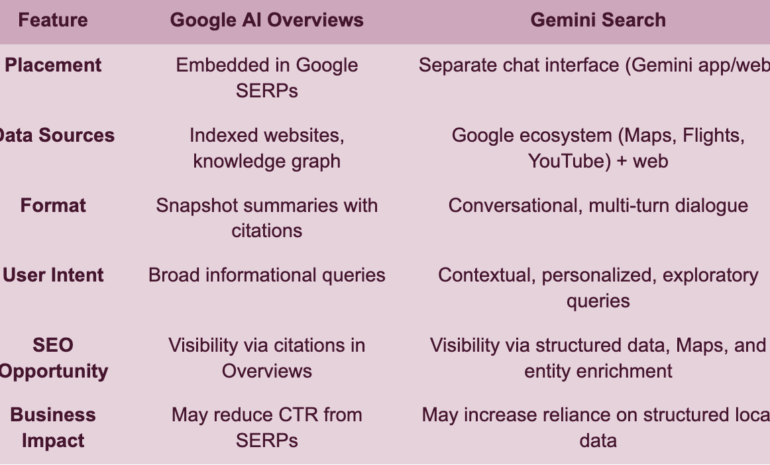To stay up-to-date with business reviews across platforms is critical. But when you pull data for thousands of locations across dozens of platforms, how do you ensure the data is current, without overloading systems or wasting API calls?
The answer lies in hashing, a behind-the-scenes technique that plays a vital role in keeping review data fresh, accurate, and efficiently synced. Let’s explore what hashing is, how we use it at Local Data Exchange, and why it matters for SaaS providers, agencies, and multi-location brands.
What is Hashing?
Hashing is a method of transforming data (like a review or a profile entry) into a fixed-size string of characters, typically via a cryptographic hash function. Think of it as a unique “fingerprint” for a piece of content.
Any time the underlying data changes, even slightly, the resulting hash will be completely different. This gives systems an incredibly fast way to compare data without reading the full content every time.
For example:
- Hash(“Excellent service, would return again!”) → a18f…
- Hash(“Excellent service, would return again!”) → Same hash
- Hash(“Excellent service, will return again!”) → Completely different hash
Why Use Hashing in Review APIs?
When you sync review data across platforms like Google, Yelp, and Facebook, the main challenges are:
- Detecting changes quickly
- Avoiding redundant updates
- Keeping data consistent and trustworthy
- Minimizing resource consumption (time, bandwidth, and cost)
Hashing solves all of this by allowing our system to check if anything has changed without comparing full text strings or entire review records. If the hash is the same, nothing changed. If it’s different, we fetch and sync the new data.
Real-World Benefits of Hashing for Review Sync
Faster Syncing Cycles
Instead of reviewing every data field for every location on every cycle, we check hashes first. That reduces load and increases speed which is essential when processing millions of review records per day.
Lower API Usage & Costs
APIs often have rate limits or cost per request. By checking hashes instead of resyncing unchanged data, we drastically reduce the number of requests we make to review platforms.
Real-Time Accuracy Where It Counts
Hashing lets us prioritize syncing only what’s new. New reviews, updated ratings, or changed review responses are identified instantly and pushed through. No stale data. No missed updates.
Reduced Processing Overhead
Less data to process means faster pipelines. This gives our clients near-real-time access to updated dashboards, analytics, and automated actions like sentiment tagging or alerts.

Multi-Location Review Monitoring
Let’s say your agency is managing 2,000 restaurant locations across North America. Each one has reviews on Google, Yelp, and Facebook. That’s 6,000 review sources to monitor.
Without hashing:
- You’d need to pull all reviews from all platforms on every cycle
- Compare full records
- Update databases and push changes, even if nothing changed
With hashing:
- You simply compare hashes
- Only fetch and sync changed records
- Save thousands of compute hours and API calls per day
How Local Data Exchange Uses Hashing
At Local Data Exchange, we use intelligent hashing to ensure review data is synced efficiently and without duplication. Here’s how it works:
When you first request reviews through our API, we hash the set of records returned—this hash represents the exact number and content of reviews retrieved during that request.
The next time you call the API, we compare the new set of available reviews against the last hashed checkpoint. Only the new or updated reviews (including those with even minor changes like a punctuation edit in a response) will be returned. This means:
- You don’t reprocess unchanged data
- You get faster sync times
- Your database stays clean and current
We apply hashing at multiple levels, including review content, reviewer metadata and responses: business replies to reviews.
In addition to hashing, we layer in freshness metrics such as:
- The last updated timestamp from each review source
- Frequency of changes on the platform
- Priority sync tiers for high-volume or high-value locations
This combined strategy ensures both maximum efficiency and data integrity, whether you’re syncing 100 reviews or a million.
Limitations of Hashing (and How We Address Them)
Platform Variability: Some platforms don’t always provide updated timestamps. We overcome this by versioning hash logic and combining it with historical sync logs.
Duplicate Review Risks: Slight content differences might result in different hashes for essentially the same review. Our deduplication logic accounts for this by checking IDs and metadata.
One-way Only: Hashes can’t tell you what changed, only that something did. That’s why we still fetch the full record for changed hashes and use internal diff tools to analyze updates.
The Big Picture
Hashing isn’t flashy. It’s not something your clients will ever ask about. But it’s the backbone of a scalable, reliable review management system. It’s how platforms like ours handle thousands of changes daily while staying efficient, accurate, and resource-conscious.
For multi-location businesses and SaaS platforms, hashing is a silent partner, working in the background to keep your reputation data sharp and your workflows optimized.


